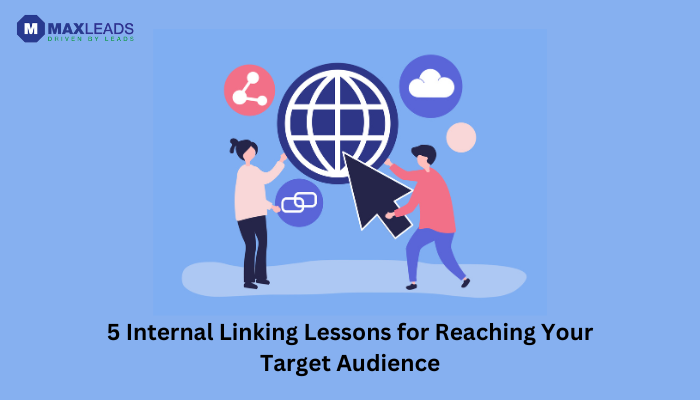5 Internal Linking Lessons to Help You Reach Your Target Audience
Internal linking is the practice of directing visitors from one page of your website to another. It is a powerful way to improve the navigation of your website, boost your SEO, and help your visitors find the information they are looking for.
Building internal links on your website is a very effective way to boost organic traffic. It gives you complete control over the process as the website owner.
So, what is the value of creating internal links for your target audience? Building internal links has clear benefits for your audience. More organic traffic generates more leads and more conversions. How’s that possible? By treating each internal link you create as a direct line to the resource your visitor requires at the time.
Here are 5 internal linking lessons that will help you reach your target audience:
1. Think about your anchor texts.
Anchor text is the text that you use to create a link. It is important to choose anchor texts that are relevant to the content of the page you are linking to. This will help users understand what the link is about and make it more likely that they will click on it.
If you are linking to a page about “how to make a cake,” for example, you could use the anchor text “learn how to make a cake.”
2. Keep your links crawlable.
Search engine crawlers need to be able to follow your links to index your website. Make sure that your links are formatted correctly and that they point to valid pages.
3. Build structural internal links.
Structural internal links are links that help users navigate your website. They can be used to create a hierarchy of pages or to connect related content. For example, you could create a navigation bar with links to your most important pages.
4. Create contextual internal links.
Internal links that are placed within the body of your content are called contextual links.They are a great way to provide additional information or to direct users to related content. For example, you could link to a blog post about a product that you are mentioning in an article.
5. Link important pages.
Not all of your website’s pages are created equal. Some pages are more important than others, and they should be linked to more frequently. These pages could include your homepage, your contact page, and your most popular blog posts.
By following these internal linking lessons, you can improve the navigation of your website, boost your SEO, and help your visitors find the information they are looking for.
Here are some additional tips for effective internal linking:
- Use keywords in your anchor text. This will help users find your content when they are searching for information.
- Vary the length of your anchor text. This will make your links more natural and less spammy.
- Don’t overdo it. It can be overwhelming for users to see a lot of internal links.
- Use internal links to promote your content. This could include linking to your latest blog posts, product pages, or case studies.
By following these tips, you can create a strong internal linking strategy that will help you reach your target audience and improve your website’s performance.Ready to optimize your website’s navigation and boost engagement? Reach out to us with any queries – we’re here to help!”


Write a Comment